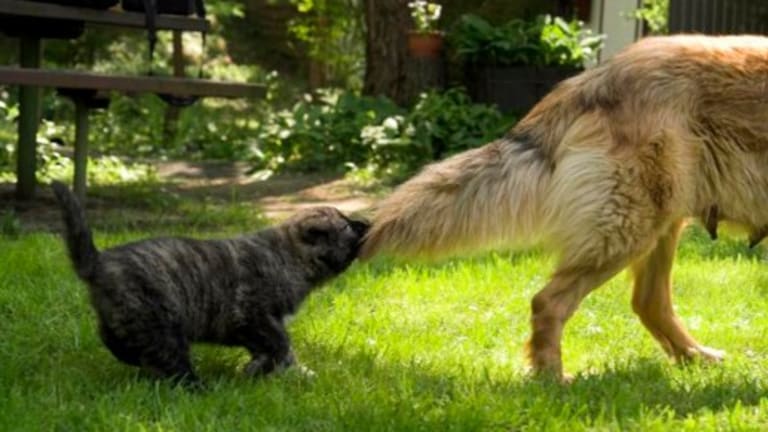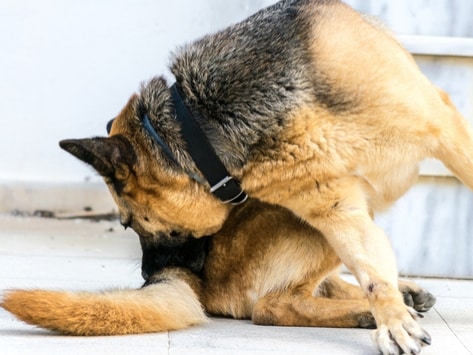Hair Loss In Dogs Tail
Hair Loss In Dogs Tail - Hair loss in dogs is a common occurrence and could be indicative of various underlying issues. If your furry friend has been losing hair along its tail, then there is definitely a reason to worry. There could be several reasons dogs lose hair on their tails - from allergies and hormonal issues to infections and parasites. Let's take a look at some of the most common reasons and find out what you can do to help your dog.
Allergies
If your dog is experiencing an allergic reaction, one of the first symptoms you may notice is hair loss on its tail. This can be caused by various allergens like food, pollen, medications, and insect bites. If you suspect that allergies are causing hair loss on your dog’s tail, it's best to take it for an allergy test to identify the allergen. Once identified, you can mitigate the symptoms by eliminating the allergen from your dog’s diet or environment.
Tip:
If you're unsure about the allergens causing your dog’s hair loss, consider consulting a veterinarian. A vet can perform a series of tests and help you identify the specific allergens.
Parasites
Parasites like fleas, ticks, and mites can invade your dog's skin and cause intense itching, hair loss, and skin irritation. These parasites usually feed on your dog's blood and weaken its immune system, making it more susceptible to other infections. To prevent parasite infestations, make sure your dog is on a regular parasite control regimen recommended by your vet. Regular baths and grooming can also help prevent parasite infestations.
Idea:
You can try using essential oils like lavender or eucalyptus to repel fleas and other parasites. Simply add a few drops of the oil to your dog’s shampoo or spray it on its coat after a bath.
Infections
Infections caused by bacteria or fungus can also lead to hair loss on your dog's tail. These infections are usually accompanied by symptoms like redness, swelling, and a foul odor. If you notice any of these signs, take your dog to the vet immediately for treatment. Your vet may prescribe antibiotics or antifungal medication to eliminate the infection.
How to:
You can help prevent infections by keeping your dog clean and dry. Regular baths, grooming, and providing a clean environment for your dog can help keep it free from skin infections.
Hormonal Issues
Hormonal imbalances can also cause hair loss on your dog's tail. The most common hormonal issue that affects dogs is hypothyroidism, which is caused by an underactive thyroid gland. This condition can result in hair loss, weight gain, lethargy, and other health problems. If you suspect that your dog has hormonal issues, consult a veterinarian for diagnosis and treatment.
Tip:
If your dog has been diagnosed with hypothyroidism, your vet may prescribe synthetic thyroid hormone supplements to help regulate its thyroid gland and prevent hair loss.
Trauma
If your dog experiences trauma to its tail, it could result in hair loss. Trauma can include accidents, bites, and injuries that result in damage to the skin and hair follicles on the tail. In such cases, the hair loss is usually a natural part of the healing process, and the hair will regrow once the skin is healed.
Idea:
You can help your dog recover from tail injuries by keeping it comfortable, clean, and well-rested. Use a cone collar or bandage to prevent your dog from biting or scratching the wound, and follow your vet’s instructions for medication and care.
As you can see, there are various reasons your dog might be losing hair on its tail. Identifying the underlying cause is the first step in treating the condition and helping your furry friend feel healthy and happy again. Remember to consult a veterinarian if you notice any unusual hair loss or other symptoms in your dog.

Hair Loss In Dogs Tail - Hair loss in dogs is a common occurrence and could be indicative of various underlying issues. If your furry friend has been losing hair along its tail, then there is definitely a reason to worry. There could be several reasons dogs lose hair on their tails - from allergies and hormonal issues to infections and parasites. Let's take a look at some of the most common reasons and find out what you can do to help your dog.
Tips to Prevent Hair Loss On Your Dog's Tail
Here are a few tips to help you prevent hair loss on your dog's tail:
- Regular grooming to keep your dog’s coat and skin clean and healthy.
- Avoid using harsh chemicals and shampoos that could irritate your dog’s skin.
- Feed your dog with a high-quality, nutritious diet to help promote healthy skin and coat.
- Minimize your dog’s exposure to allergens and parasites by keeping your home clean and tidy.
The Bottom Line
Dogs losing hair along their tail is not uncommon, and it could be caused by various reasons. However, it's important to identify the underlying cause and address it to prevent further hair loss and help your dog feel better. If you notice unusual hair loss or any other symptoms in your dog, seek help from a veterinarian immediately. With the right diagnosis and care, your furry friend can regrow its hair on its tail and regain its energy and happiness.


View more articles about Hair Loss In Dogs Tail
Post a Comment for "Hair Loss In Dogs Tail"